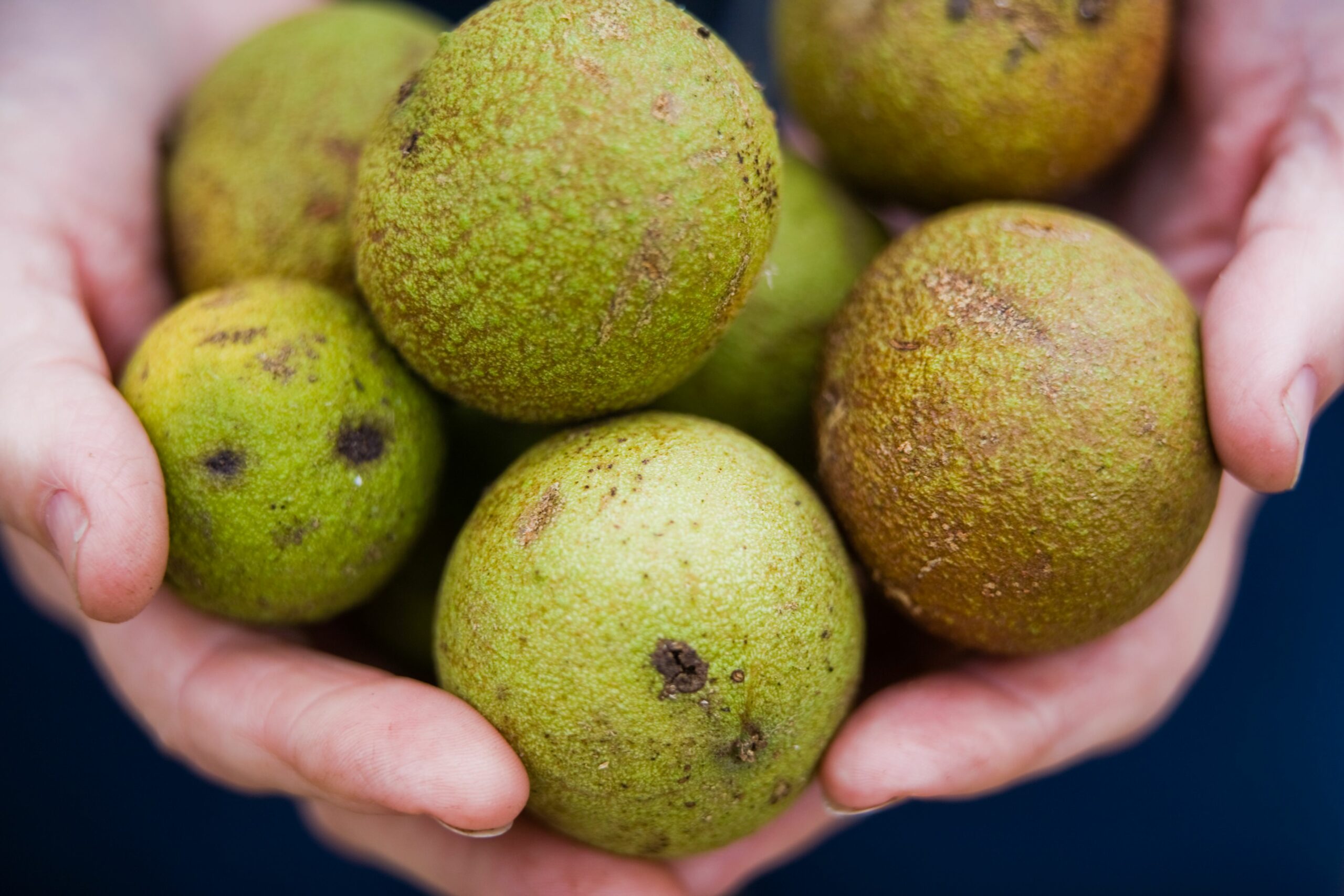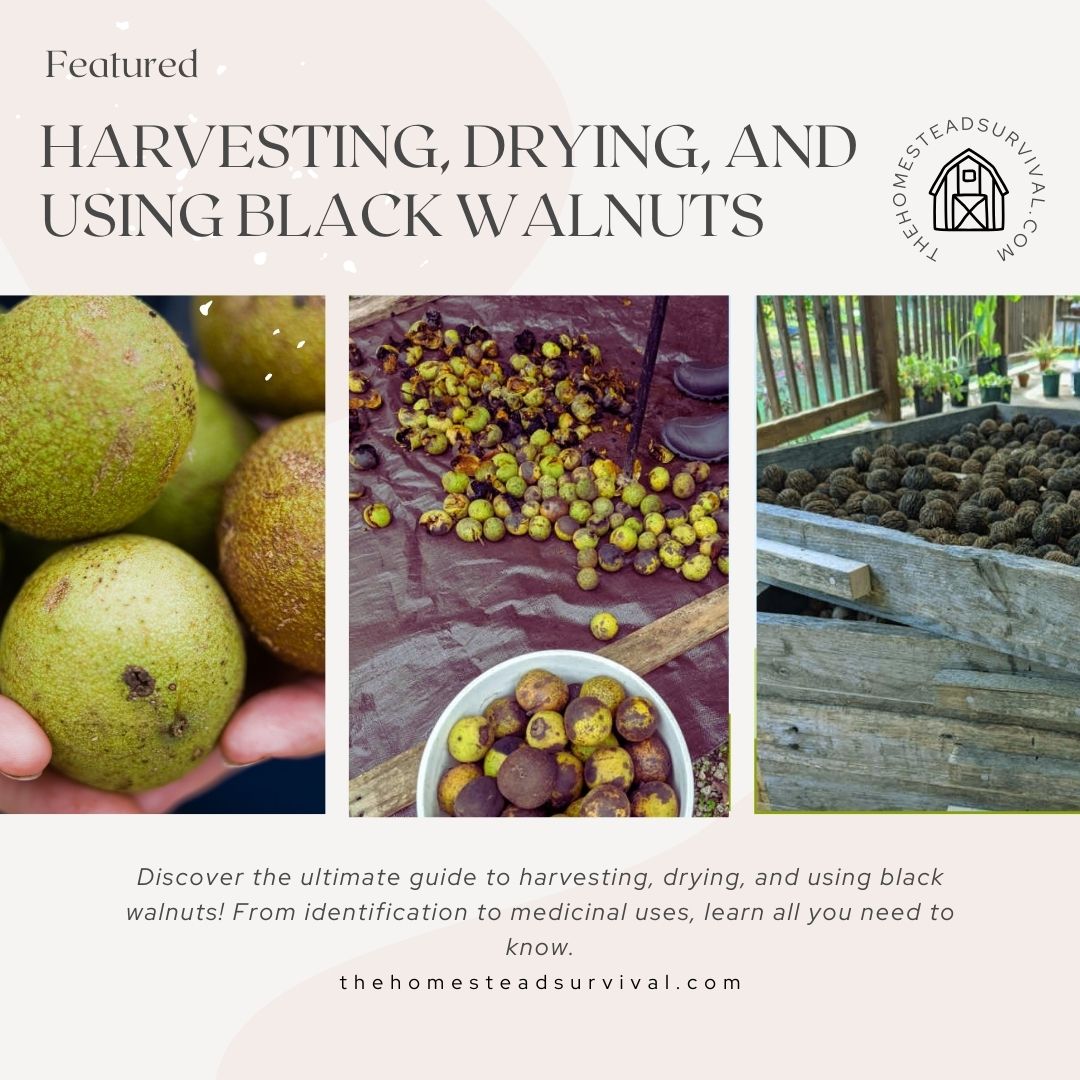Hey, homesteaders and foraging enthusiasts! We’ve stumbled upon an incredible resource that you’ll absolutely love. Jan Berry, the talented writer and herbalist behind Unruly Gardening, has penned an exhaustive guide on harvesting and using black walnuts. From identification tips to harvesting and even medicinal uses, this blog post is a treasure trove of information. Let’s dive in!
Identification Tips
- Leaves: Compound leaves with ovate-oblong leaflets arranged alternately along a shared stem.
- Bark: Dark grayish-brown with deep furrowing and ridges.
- Nuts: Round with rough green hulls that turn brown/black when left on the ground.

When to Harvest
- Season: September or October.
- Quality Check: Press your thumb into the hull. If it leaves a dent, the nut is ready for harvest.
Removing the Hulls
- Staining: Black walnuts stain everything! Wear gloves and old clothing.
- Small Quantity: Use a hammer or rock to smash the hulls.
- Large Quantity: Spread the nuts on a tarp and use a digging bar to smash them.
Washing and Float Testing
- Washing: Use a corded drill with a paint stirrer attachment in a bucket of water.
- Float Test: Place the cleaned nuts in a bucket of water. Discard any that float.
Curing and Drying
- Why Cure: Curing makes it easier to harvest the nuts and improves the flavor.
- Duration: 2-3 weeks.
Cracking and Storing
- Tools: Use a hammer or the back of a hatchet.
- Storage: Best stored in the freezer.
Medicinal Uses
- Black Walnut Hulls: Antifungal and antibacterial properties.
- Black Walnut Oil & Salve: Useful for skin ailments like athlete’s foot and ringworm.
- Black Walnut Tincture: Used externally for warts, psoriasis, and fungal infections.
Additional Uses
- Black Walnut Leaf Infusion: Can be used as a wound wash.
- Poultice from Fresh Leaves: Useful for bug bites and minor bleeding.
Allergies and Precautions
- If you’re allergic to tree nuts, avoid using black walnut hulls internally or externally.
Final Thoughts
The original blog post is an absolute must-read for anyone interested in foraging or natural remedies. Jan Berry has done an exceptional job in covering all the bases. For the full experience and to give credit to this amazing author, make sure to read the original post.
So, what are you waiting for? Get out there and start foraging for some black walnuts!
Frequently Asked Questions (FAQs) about Harvesting, Drying, and Using Black Walnuts
What is the best time to harvest black walnuts?
The best time to harvest black walnuts is during September or October. You can check the readiness of the nut by pressing your thumb into the hull; if it leaves a dent, it’s ready for harvest.
How can I remove the hulls from black walnuts?
You can remove the hulls using a hammer or rock for small quantities. For larger quantities, spread the nuts on a tarp and use a digging bar to smash them. Remember, black walnuts stain, so wear gloves and old clothing.
What is the float test for black walnuts?
After washing the hulled nuts, place them in a bucket of water. Any nuts that float should be discarded as they are likely to be bad.
How long should I cure and dry black walnuts?
Curing and drying should take about 2-3 weeks. This process makes it easier to harvest the nut meat and improves its flavor.
What are the medicinal uses of black walnuts?
Black walnut hulls have antifungal and antibacterial properties. Black walnut oil and salve can be used for skin ailments like athlete’s foot and ringworm. Black walnut tincture is used externally for warts, psoriasis, and fungal infections.
Can I use black walnut leaves?
Yes, black walnut leaves can be used to create a poultice for bug bites and minor bleeding. They can also be used to make an infusion similar to a wound wash.
Are there any precautions I should take when using black walnuts?
If you’re allergic to tree nuts, you should avoid using black walnut hulls both internally and externally.


